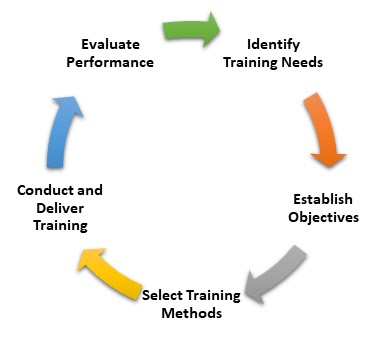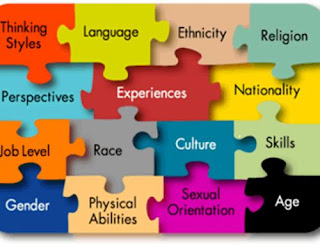Empowering Excellence: The Significance of Learning & Development Through HR Perspective
The Role of Employee Training and Development in Organizational Growth
 |
| Figure 1: Nurturing the workforce through training & development, https://www.alanna.ai/growth-compnay-employee/ |
In the realm of human resources management, the importance of learning and development cannot be overstated. Employees serve as the backbone of any organization and their performance directly impacts the overall success or challenges faced by the organization. Recognizing the critical role of training and development is essential for organizational leaders, aiming to maintain a competitive edge in today's global market. In today's fast paced and competitive business environment, organizations are increasingly recognizing the importance of investing in their greatest asset, their employees. Employee training, learning and development have become essential components of human resources strategies. Organizations strive for success through innovation and excellence in their services and products. However, the realization of these aspirations' hinges on the expertise and skills of well-trained individuals. While employee training and development may present challenges for many leaders, organizations worldwide are investing significantly in this area. This substantial investment underscores the crucial role of training and development, in empowering employees to positively impact organizational outcomes.
What is training and development:
 |
| Figure 2 : Training & Development Equals Successful Workforce, http://www.shiftmatch.com/blog/2017/11/09/benefits-training-casual-employees/ |
Training and development include a range of activities designed to enhance the knowledge, skills and competencies of employees, to perform their roles effectively. It involves envisioning, developing, implementing and sustaining programs that equips individuals with the capabilities needed. These capabilities contribute to organizational growth and success consequently. From mandatory and compliance training to executive development and interpersonal skills enhancement, training initiatives cover diverse content areas, tailored to meet the specific needs of employees at various levels within the organization.
Why do organizations need Training and Development?
The primary goal of training and development is to empower employees with the requisite skills and knowledge to excel in their roles and drive organizational performance. By investing in employee growth and development, organizations not only capitalize on high potential individuals, but also nurture a culture of continuous learning in professional advancement. Training and development initiatives foster carrier progression, enhanced job satisfaction, boost employee engagement and improve overall organizational effectiveness. Moreover, they contribute to retail and retention as a positive spiral. It greatly helps in succession planning and the cultivation of skilled workforce who are capable of meeting evolving business demands.
How should organizations approach training and development?
 |
| Figure 3 : Mentor trainings with variety of approaches, https://www.resource-connection.com/2019/08/28/benefits-of-being-a-mentor/ |
- Classroom trainings
- Online courses
- Workshops
- Seminars Mentorship programs
- Job rotations
- On the job training
Blended learning approaches that combine traditional and digital learning methods are increasingly popular for delivering comprehensive and engaging training experiences. By offering a mix of formal and informal learning opportunities, organizations can cater to different learning styles and maximize the impact of training and development initiatives.
Strategies for effective employee training and development.
 |
| Figure 4 : Strategic training & development cycle, Training and Development - Definition, Importance, Process & Example | HRM Overview | MBA Skool |
1. Needs assessment:
Conducting a thorough assessment of employee skills, competencies and development needs is the first step in designing an effective training and development program. By identifying gaps in areas for improvement, HR can tailor training initiatives to meet the specific needs of individual employees and the organization as a whole.
2. Continuous learning opportunities:
Implementing a culture of continuous learning is essential for employee growth and development. An organization can help employees acquire new skills and enhance their professional capabilities providing access to online courses, workshops, seminars, mentorship programs.
3. Personalized development plans:
Development plans should be based on individual employees' career goals, interests and strengths. This will drive motivation and more engagement by aligning training initiatives with individual aspirations. Thus, HR can create more meaningful and impactful learning experiences.
4. Coaching and mentoring:
Pairing employees with experienced mentors or coaches can accelerate the learning and development. Mentors can provide guidance and support as well as feedback to help employees navigate challenges and set their goals.
5. Feedback and evaluation:
Continuous feedback and continuous performance evaluations are essential for measuring the effectiveness of the training programs. HR should gather feedback from employees, managers and the trainers to assess the impact of the trainings and make adjustments as needed.
How can organizations support training and development efforts?
Leaders play a crucial role in supporting & facilitating successful training and development initiatives within their organization. Leaders can create an environment conducive to individual and organizational success. Effective communication feedback mechanisms, recognition of achievements and alignment of training initiatives with strategic goals are essential components of leadership support for training and development efforts.
Addressing gaps and challenges in training and development:
 |
| Figure 5: Challenges at training programs, http://medexec.org/successful-people-embrace-change/ |
Despite the Extensive research conducted in the field of training and development in employee performance, leaders still continue to face gaps and challenges in this domain. By acknowledging these challenges and proactively seeking solutions, organizations can bridge the gap between theory and practice in training and development:
1. Alignment with organizational goals:
Training initiatives should align with the organizations objectives. training programs must be designed to address specific skill gaps and contribute directly to the achievement of organizational goals.
2. Resource constraints:
Limited budget, time and resources can pose a significant challenge in developing and delivering training programs. Organizations may struggle to allocate sufficient resources for these programs, impacting the quality and effectiveness of the trainings.
3. Measuring effectiveness:
Evaluating the impact of the training on employee performance and organizational outcomes can be challenging. Organizations may face difficulties in measuring the return on investment (ROI) of training programs.
4. Employee engagement and motivation:
Maintaining high levels of employee engagement and motivation throughout the training process can be one of the biggest challenges. Employees may resist training initiatives if they perceive them as irrelevant, boring or time consuming, leading to low participation and retention rates.
5. Resistance to change:
Employees may resist training and development initiatives if they perceive them as disrupting their routine or challenging their existing ways of working. Overcoming resistance to change and fostering a culture that values continuous learning can be a significant challenge for organizations.
Benefits of Training & Development:
 |
| Figure 6:CHRMP, Benefits of Training & Development, https://www.chrmp.com/benefits-of-employee-training/ |
Employee training and development play a crucial role in the success and growth of an organization. Overall, training and developing employees contribute to a more skilled, engaged and motivated workforce. This consequently leads to increased productivity, innovation and organizational success. By investing in the growth and development of employees, organizations can create a competitive advantage and position themselves for long term success in a rapidly changing business environment.
Conclusion:
The role of training and development in organizational growth cannot be overstated. Investing in the learning and professional development of employees is essential for building a skilled, engaged and high performing workforce. By providing opportunities for training and development organizations can unlock numerous benefits that contribute to their sustainability and success. Training and development programs not only enhance employee performance, engagement and retention, but also cultivates a culture of continuous learning and innovation within the organization. Employees who are equipped with the necessary knowledge and skills through training are better prepared to adapt to changing business environments, drive efficiency and contribute to overall organizational success. Moreover, investing in training and development demonstrates a commitment to employ growth and wellbeing, which can lead to increased job satisfaction, morale and loyalty.
Overall, training and development serve as a strategic tool for organizational growth by empowering employees to reach their full potential, supporting business objectives and maintaining competitive edge in the market. By prioritizing training and development initiatives, organizations can create a dynamic and resilient workforce, who can adapt to change and achieve long term success.


Insightful exploration of training's significance. Clear strategies for implementation. Practical guidance for fostering growth in organizations.
ReplyDeleteThis blog post provides a comprehensive overview of the significance of learning and development from an HR perspective, emphasizing its critical role in organizational growth and success. By exploring various aspects of training and development, including its definition, importance, approaches, strategies, and challenges, the post offers valuable insights for organizational leaders and HR professionals. The inclusion of practical examples, such as different training approaches and strategies for effective implementation, enhances the relevance and applicability of the content to real-world scenarios. Additionally, the post highlights the benefits of training and development, underscoring its impact on employee performance, engagement, and retention, as well as organizational innovation and competitiveness.
ReplyDeleteYour breakdown of training and development strategies, along with the comprehensive analysis of challenges and solutions, offers a thorough understanding of this critical aspect of HRM.
ReplyDeleteThis blog post discrib about The Significance of Learning & Development Through the Lens of HR: Fostering Growth, Driving Innovation. HR plays a pivotal role in cultivating a culture of continuous learning and development, equipping employees with the skills needed to thrive in a dynamic workplace, thus ensuring organizational success and sustainability.
ReplyDeleteThe post highlights the critical role of employee training and development in organizational growth. It emphasizes aligning training with goals, overcoming resource constraints, measuring effectiveness, and fostering engagement. Ultimately, investing in learning initiatives cultivates a skilled, engaged, and innovative workforce, ensuring long-term success in a competitive market.
ReplyDelete